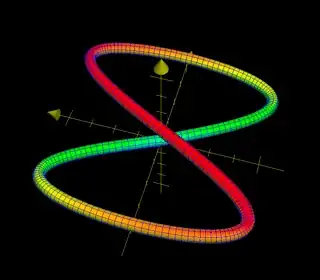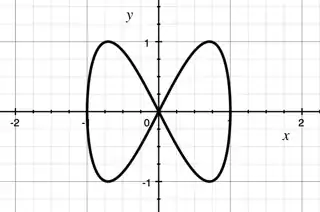Why can a figure eight, immersed in $\Bbb R^2$ via $t\mapsto \left(\cos\left(\frac\pi 2+t\right),\sin(2t)\right)$, be immersed in $\Bbb R^2$ but not embedded?
You need to first state what the figure eight is. To talk about immersions, you should have a map between smooth manifolds, but the figure eight with a crossing is not a smooth manifold. If the figure eight means a copy of $S^1$ with a twist, then this is diffeomorphic to $S^1$ and can certainly be embedded in $\Bbb R^2$. However, this depends entirely on the map used. It does not make sense to ask if something immersed in $\Bbb R^2$ can be embedded in $\Bbb R^2$. You can either ask if one manifold can be embedded in another, or if a given map between manifolds is an embedding.
Again, as a smooth manifold, the figure eight is just $S^1$, so we need to specify a map $f\colon S^1\to \Bbb R^2$. Really, we want to imagine first embedding $S^1$ into $\Bbb R^3$ so that it looks like a figure eight from above. Here is an example, where $S^1$ is shown as a tube for the sake of visualizing.

Now if we project down to the $xy$ plane, we get a map $S^1\to \Bbb R^2$ whose image is shown below.

One can show that this is an immersion, meaning that for any $p\in S^1$, the differential map $df_p\colon T_pS^1\to T_{f(p)}\Bbb R^2$ is injective. However, $f$ itself is not even injective! There are clearly two points in $S^1$ which both land on the origin in $\Bbb R^2$. So $f$ is not a bijection onto its image, and therefore not a homeomorphism onto its image (embedding).
I haven't been able to find a mathematical proof of why the crossing point is not homeomorphic.
This language doesn't make sense, but you probably mean the following: for any open set $U\subset\Bbb R^2$ containing the origin, there is no homeomorphism between $U\cap f(S^1)$ and a neighborhood of $S^1$. This is more difficult to prove; I would probably use algebraic topology.
To summarize, there are distinct questions one could ask here:
- Is there an embedding $S^1\to \Bbb R^2$? (Yes.)
- Is the map $f\colon S^1\to \Bbb R^2$ an embedding? (No because $f$ is not injective.)
- Is there an embedding from $S^1$ to $f(S^1)$ (topologized as a subset of $\Bbb R^2$)? (No but this is less immediate.)

